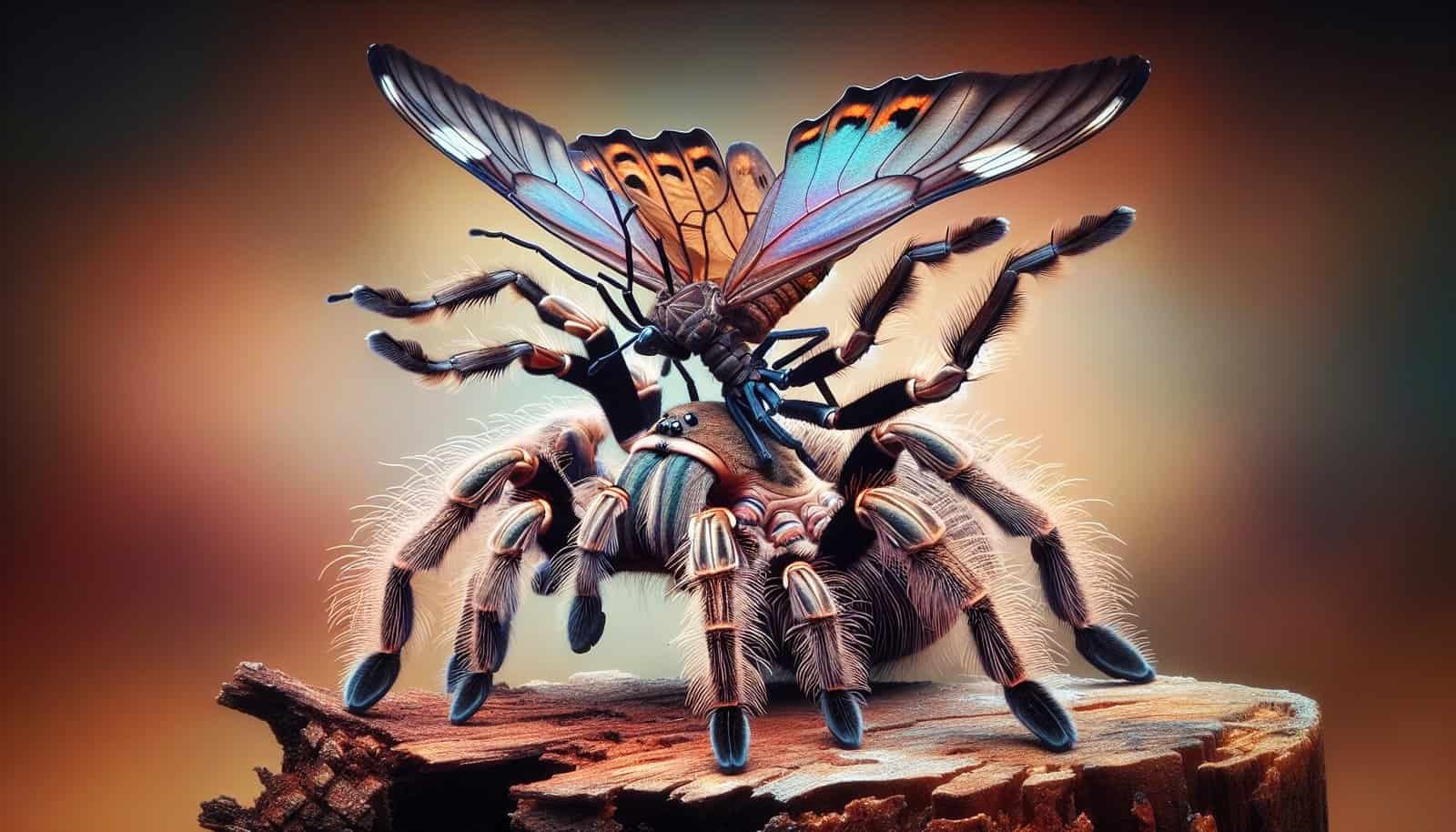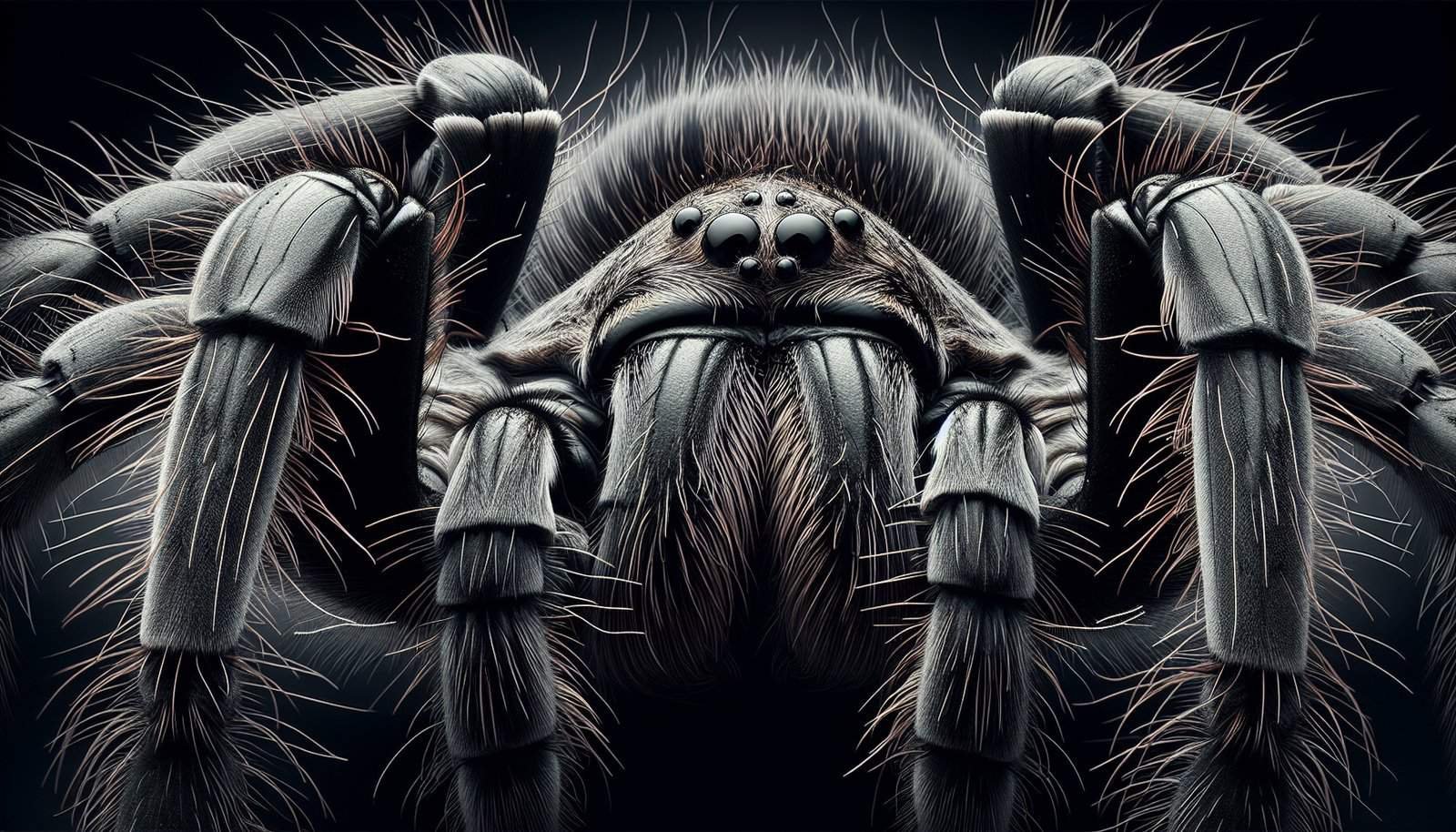In the fascinating world of tarantulas, a question often arises: how do these eight-legged creatures manage to defend themselves against the menacing presence of large predatory insects? It’s a natural curiosity, as these spiders exude an air of vulnerability, yet possess an arsenal of survival tactics that rival even the most cunning predators. In this article, we will explore the strategies and adaptations employed by tarantulas to cope with the formidable challenges posed by their insect adversaries. Prepare to be amazed by the resourcefulness and resilience of these intriguing creatures.
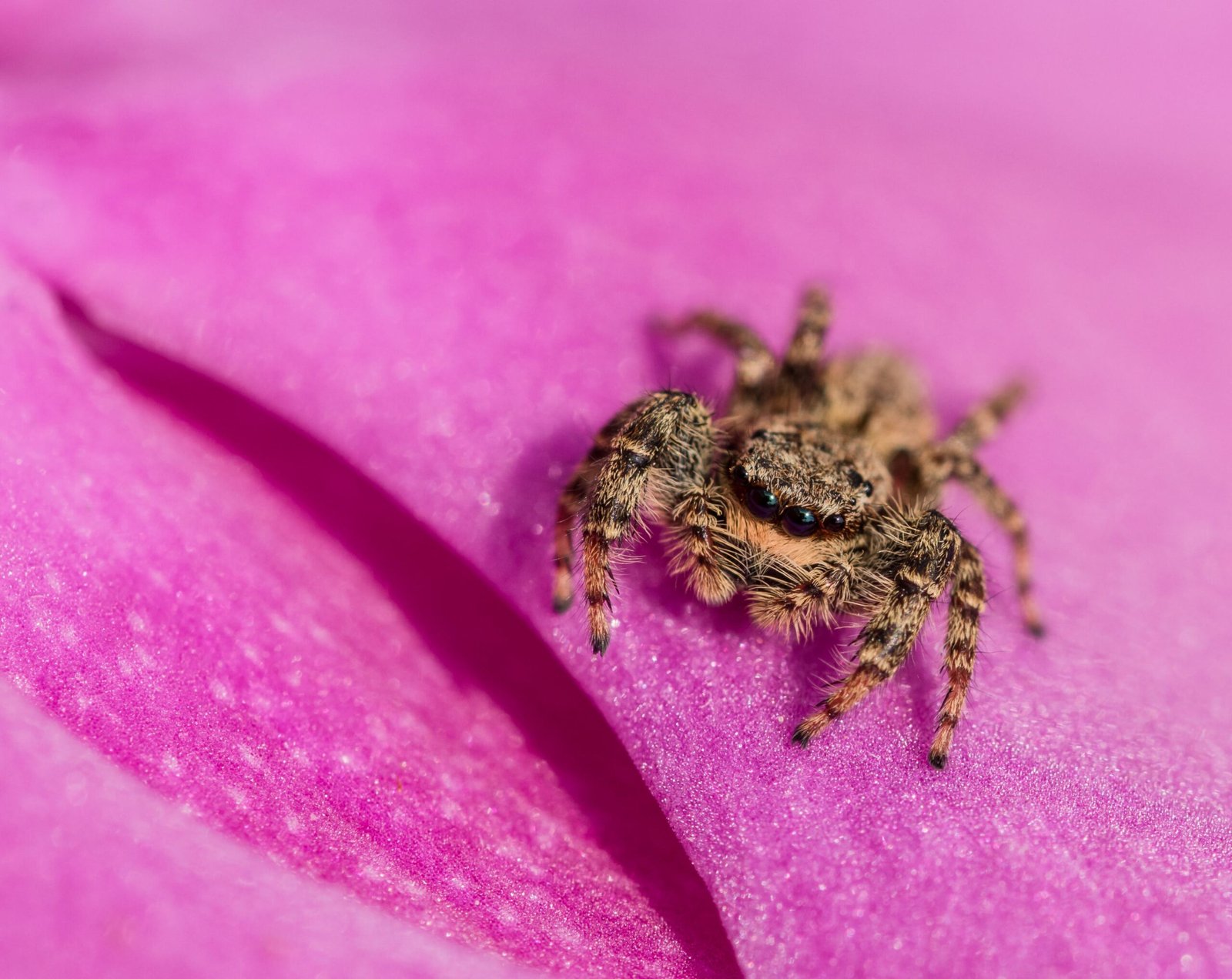
Overview of Tarantulas
Tarantulas are fascinating creatures that belong to the family of spiders known as Theraphosidae. They are known for their large size, hairy bodies, and eight legs. The physical characteristics of tarantulas vary depending on the species, but they typically have a robust body with a tough exoskeleton. They can range in size from a few centimeters to several inches in leg span.
Physical characteristics
Tarantulas have a unique appearance that distinguishes them from other spiders. They have a stout body and long, hairy legs. The hairs on their bodies serve various purposes, including sensory perception, defense, and camouflage. Tarantulas also have specialized structures known as spinnerets, located at the end of their abdomen, which produce silk for web-building and other purposes.
Habitat and distribution
Tarantulas are found in various habitats around the world, including tropical rainforests, deserts, and grasslands. They can be found in the Americas, Africa, Asia, and Australia. These versatile creatures have adapted to a wide range of environments but are most abundant in warm, arid regions. They often dwell in burrows or create silk-lined retreats to protect themselves from predators and harsh weather conditions.
Feeding and prey selection
Tarantulas are carnivorous and primarily feed on insects, small vertebrates, and other spiders. They are opportunistic predators and use a sit-and-wait strategy to ambush their prey. Tarantulas possess sharp fangs that inject venom into their victims, immobilizing them and initiating the digestion process. They then use their chelicerae to tear apart their prey and consume the nutrient-rich fluids.
Predatory Insects: A Threat to Tarantulas
While tarantulas are formidable predators themselves, they face threats from various predatory insects that occupy the same habitats. These predatory insects are skilled hunters and pose a significant danger to tarantulas.
Identification of predatory insects
Identifying predatory insects can be challenging due to their diverse forms and behaviors. However, certain characteristics can help distinguish them from other insects. Predatory insects typically have strong mouthparts, sharp mandibles, and adaptations for capturing and subduing prey. They may display aggressive behavior and possess specialized structures for feeding on other organisms.
Common predatory insects found in tarantula habitats
In tarantula habitats, several predatory insects can be found preying on these arachnids. Some common examples include wasps, ants, assassin bugs, and praying mantises. These insects have evolved unique adaptations that allow them to capture and feed on tarantulas, often using stealth and ambush tactics to overcome their venomous prey.
Characteristics and behavior of predatory insects
Predatory insects possess various characteristics and behaviors that make them effective hunters. They often have sharp mouthparts for piercing and sucking fluids, strong legs for capturing prey, and keen vision or sensory organs to detect potential victims. Some predatory insects exhibit group hunting behaviors, employing cooperative strategies to overpower larger prey. Their agility, speed, and ability to camouflage themselves contribute to their success as predators.
Defensive Behavior of Tarantulas
To survive in the face of threats from predatory insects, tarantulas have developed an array of defensive behaviors that help them protect themselves and their offspring.
Camouflage as a defense mechanism
Tarantulas rely on camouflage as a primary defense mechanism. Their bodies often blend with their surroundings, making it difficult for predators to spot them. Some species have evolved color patterns that match the surrounding vegetation or soil, effectively hiding them from potential threats. By remaining inconspicuous, tarantulas can reduce the likelihood of being targeted by predatory insects.
Use of urticating hairs
One unique defensive adaptation possessed by tarantulas is the presence of specialized hairs known as urticating hairs. These hairs are located on the abdomen and can be easily dislodged or flicked at potential threats. When disturbed, these tiny barbed hairs cause irritations and discomfort to predators upon contact, serving as a deterrent. Tarantulas can control the release of these hairs to fend off attackers or create a defensive barrier.
Threat display and aggression
When confronted by a predator, tarantulas may engage in threat displays to intimidate and deter the aggressor. They may raise their front legs, revealing their fangs and venomous capabilities, while simultaneously hissing or stridulating to produce audible warning sounds. If the predator does not retreat, the tarantula may become aggressive, lunging towards the threat and attempting to bite or deliver venomous stings.
Venom and Envenomation
Tarantulas possess venomous glands and fangs that they use to subdue their prey, but their venom also plays a crucial role in defending against predatory insects.
Overview of tarantula venom
Tarantula venom is a complex mixture of proteins and peptides with varying effects on different prey. While the venom of tarantulas is generally not harmful to humans, it can be highly potent against their smaller prey. The venomous compounds target the nervous system, muscular function, and vital organs of the prey, incapacitating them and initiating the digestion process.
Effects of venom on predatory insects
Predatory insects that attempt to prey on tarantulas may be exposed to the venom through bites or stings. The venom can have varying effects on these insects, ranging from paralysis and immobilization to disruption of vital physiological processes. In some cases, the venom may prove lethal, acting as a powerful weapon against predatory insects, effectively deterring them from hunting tarantulas.
Envenomation techniques used by tarantulas
When a tarantula senses a predatory insect or other threat, it may employ envenomation techniques to defend itself. These techniques involve delivering venom through their fangs or injecting venom into the attacker using specialized stingers. The venom acts rapidly, incapacitating the predator and allowing the tarantula to escape or disable the threat.
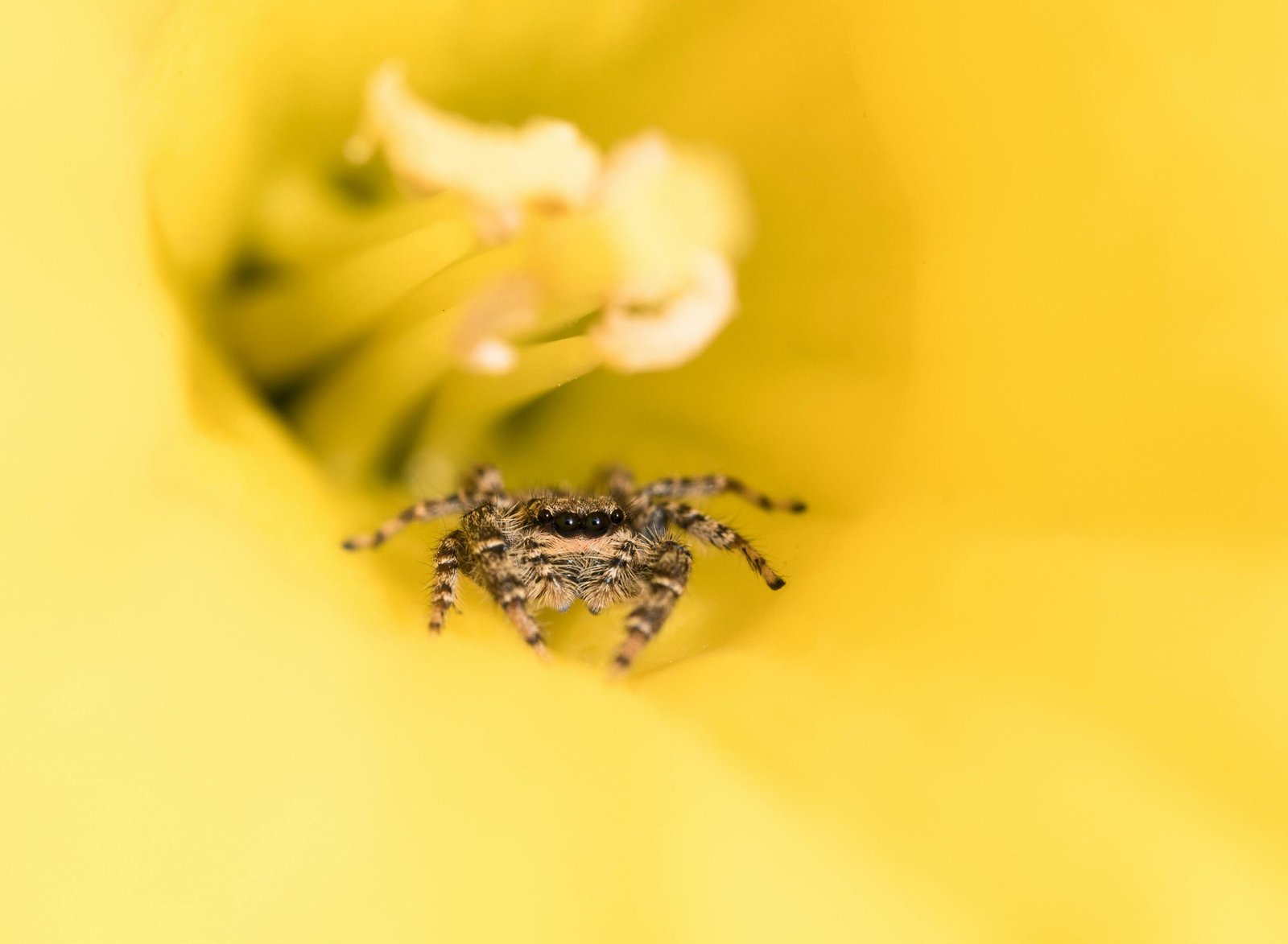
Reproductive Strategies and Predatory Insects
Predatory insects can significantly impact tarantula reproduction, affecting mating behaviors, egg sac protection, and survival of spiderlings.
Impact of predatory insects on tarantula reproduction
The presence of predatory insects in tarantula habitats can pose a challenge to successful reproduction. Mating behaviors may be influenced by the risk of predation, with male tarantulas needing to assess and minimize threats before approaching a potential mate. The risk of predation may also lead to decreased mating opportunities, as female tarantulas may be more cautious or selective when choosing mates in high-risk environments.
Defensive strategies during mating
During the mating process, tarantulas may employ defensive strategies to protect themselves from predatory insects. Male tarantulas often exhibit courtship behaviors to gauge female receptiveness and ensure they are not approaching a potential threat. They may utilize threat displays or even engage in physical combat with competitors or predators to establish dominance and safeguard the mating process.
Protection of egg sacs and spiderlings
Female tarantulas invest significant energy and resources into producing and protecting their egg sacs. The presence of predatory insects adds an extra layer of challenge to this process. Tarantulas may construct elaborate nests or retreats to conceal their egg sacs, effectively hiding them from potential predators. The female tarantula may also remain in close proximity to the sac, guarding it against predatory insects, and using defensive behaviors if necessary.
Prey Selection and Avoidance of Predatory Insects
Tarantulas have evolved mechanisms to detect and avoid predatory insects in their environment, allowing them to selectively target suitable prey and minimize the risk of predation.
Ability of tarantulas to detect predatory insects
Tarantulas possess sensory organs that enable them to detect the presence of predatory insects in their surroundings. Their ability to sense vibrations in the ground and air, coupled with acute vision and chemoreceptors, allows them to identify potential threats. They can differentiate between prey and predators, enabling them to focus on hunting while reducing the risk of encountering dangerous attackers.
Prey selection preferences
Tarantulas exhibit preferences when it comes to prey selection. They often target smaller insects that are easier to overpower and consume. In some cases, tarantulas may actively avoid larger insects that could pose a danger or risk of injury during predation. By selecting suitable prey items, tarantulas optimize their feeding efficiency while minimizing the likelihood of engaging with predatory insects.
Avoidance and escape behaviors
When tarantulas detect the presence of predatory insects, they may employ avoidance and escape behaviors to minimize the risk of predation. These behaviors can include retreating into burrows, seeking refuge in dense vegetation, or utilizing silk draglines for rapid movement and quick escape. By using their agility, speed, and environmental knowledge, tarantulas can effectively evade predatory insects and ensure their survival.
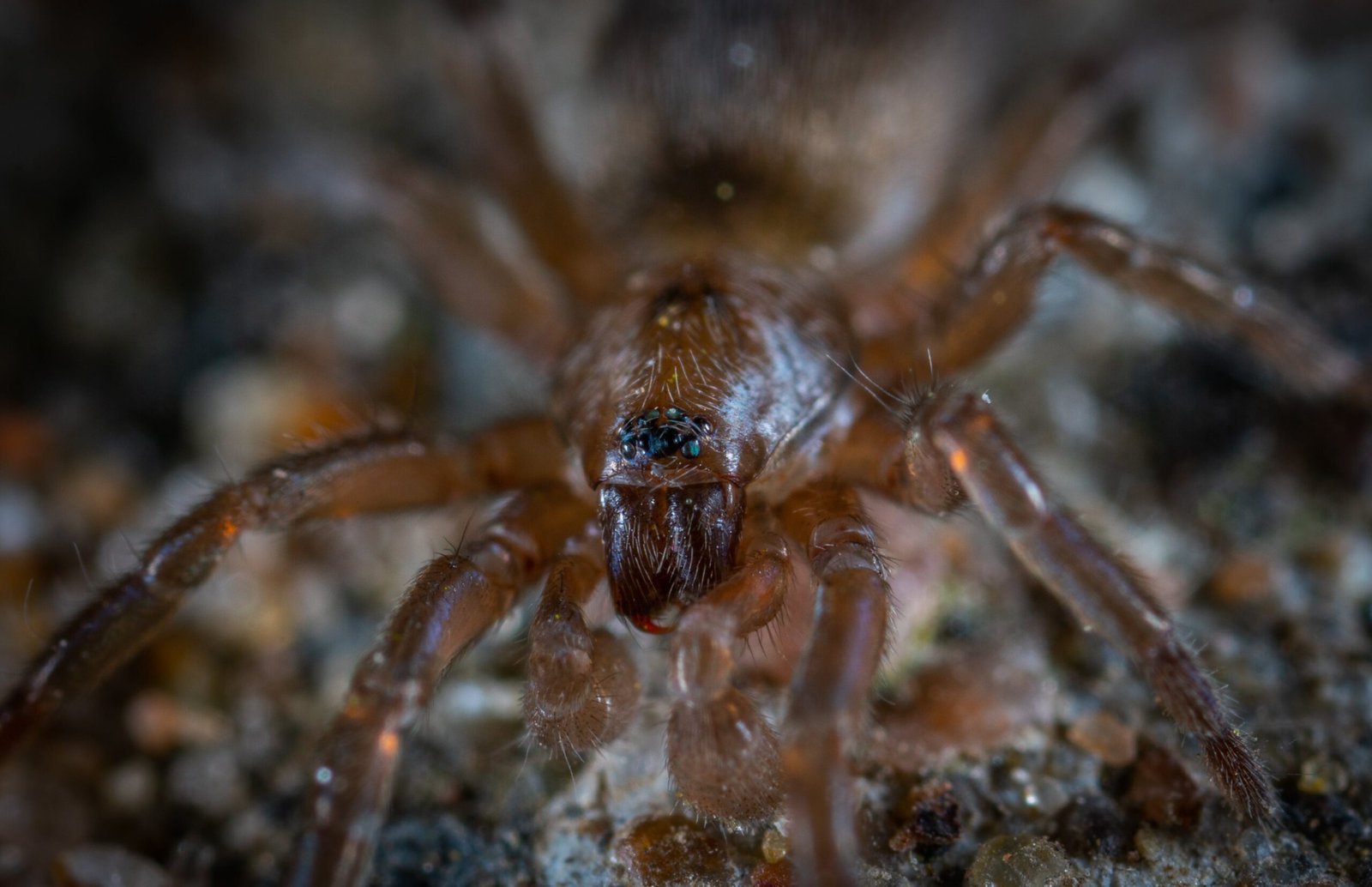
Physical Adaptations of Tarantulas
Tarantulas possess various physical adaptations that aid in their defense against predators, allowing them to withstand attacks and increase their chances of survival.
Structural features aiding defense
Tarantulas have evolved structural features that aid in their defense against predators. Their tough exoskeleton provides protection against physical attacks, while their large size serves as a deterrent to potential predators. Additionally, tarantulas possess strong bristles and spines on their bodies and legs, acting as physical barriers to deter predators from making direct contact.
Specialized hairs and spines
The specialized hairs and spines on tarantulas’ bodies serve multiple functions, including defense. These hairs have barbs or microscopic hooks that can irritate or injure predators upon contact, providing an additional deterrent against attacks. The hairs also aid in sensory perception, allowing tarantulas to detect vibrations, movements, or potential threats in their environment.
Leg adaptations and mobility
Tarantulas’ legs are critical for their mobility and defense. These spiders have strong, muscular legs that allow them to move quickly when escaping from predators or pursuing prey. Some tarantula species have adapted leg structures that enable them to climb vertical surfaces, flee with agility, or display warning behaviors. These adaptations enhance their ability to survive encounters with predatory insects.
Camouflage and Crypsis
Camouflage and crypsis are vital strategies employed by tarantulas to blend into their environment and avoid detection by predators, including predatory insects.
Strategies for blending into the environment
Tarantulas employ various strategies for blending into their environment. Some species have coloration and patterns that closely match their surrounding vegetation or substrate, making them difficult to distinguish from their habitat. Others may adopt behaviors or postures that mimic leaf litter, tree bark, or rocks, enhancing their concealment and reducing the chances of being detected by predators.
Coloration and pattern adaptations
Tarantulas display a wide range of coloration and pattern adaptations, which aid in their camouflage. Some species have vibrant colors or intricate patterns that blend seamlessly with their environment, effectively disguising them from predators. Others possess cryptic coloration, featuring earth tones or muted hues that allow them to blend into their surroundings and remain inconspicuous.
Use of surroundings for concealment
In addition to coloration and pattern adaptations, tarantulas utilize their surroundings for concealment. They may position themselves strategically on tree branches, foliage, or rocks in a way that mimics their environment, making it challenging for predatory insects to detect them. By leveraging their environmental cues, tarantulas can enhance their camouflage and increase their chances of evading detection.
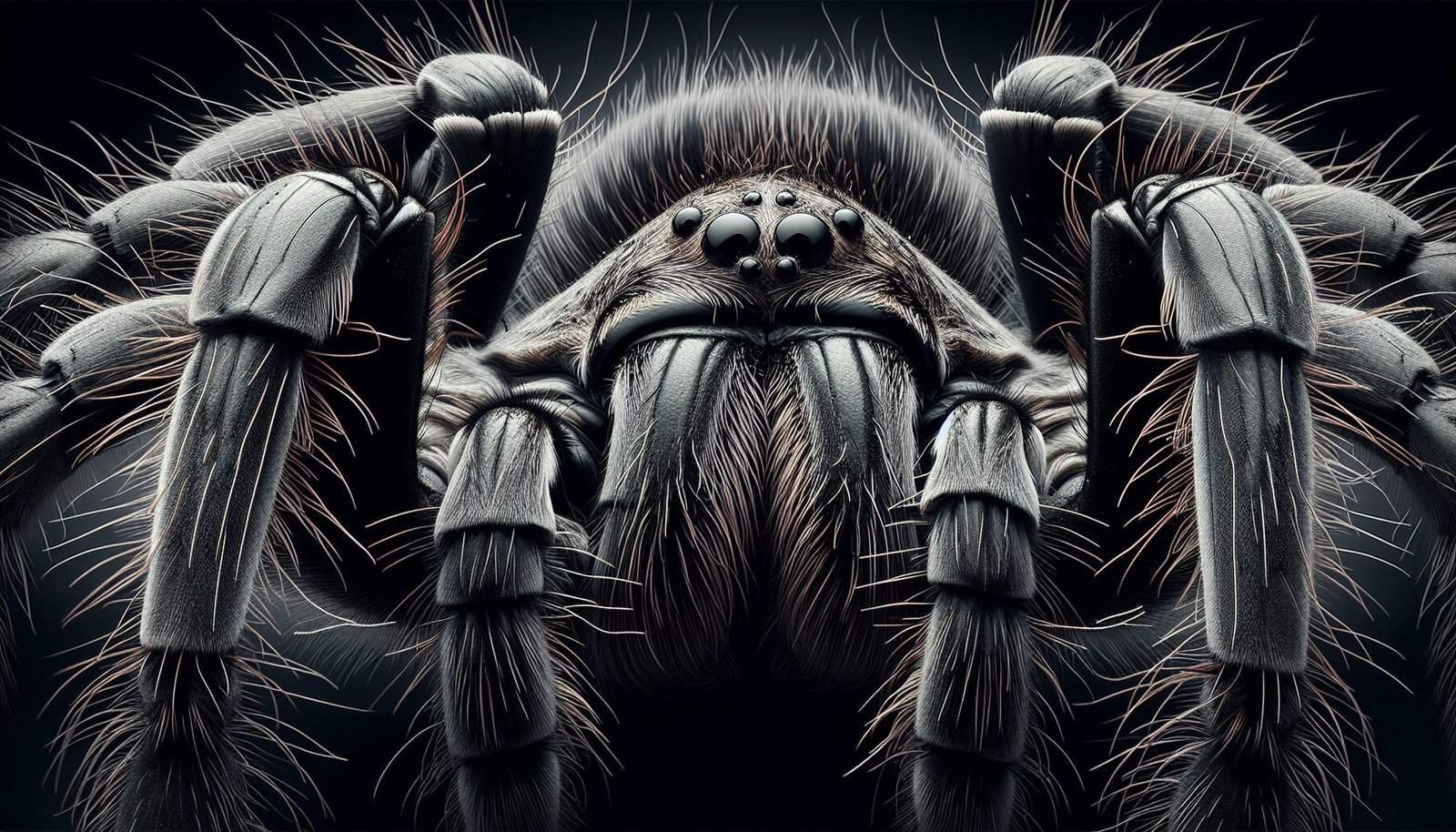
Chemical Defenses of Tarantulas
Tarantulas possess chemical defenses that serve as an additional layer of protection against predators, including predatory insects.
Chemical compounds produced by tarantulas
Tarantulas produce various chemical compounds that serve as defensive mechanisms. These compounds can include toxic substances, irritants, or deterrents. Some species emit defensive odors or secretions that are unappealing or even harmful to predators. These chemical compounds can be produced in specialized glands and released when the tarantula is threatened or attacked.
Toxicity and deterrent effects on predatory insects
The chemical compounds produced by tarantulas can have varying effects on predatory insects. Some compounds may be toxic, disrupting physiological processes or causing paralysis in predators. Others may act as deterrents, repelling potential threats or making them less desirable as prey. By utilizing chemical defenses, tarantulas can increase their chances of survival and reduce the likelihood of predation by insects.
Chemical signaling for defense
Tarantulas may also utilize chemical signaling as a form of defense. They may release pheromones or other chemical signals to communicate with predators, warning them of their venomous nature or indicating their readiness to defend themselves. These chemical signals can act as a deterrent, signaling to predatory insects that the tarantula is a formidable opponent and not worth the risk of attack.
Research and Conservation
The study of tarantula-predatory insect interactions has provided valuable insights into predator-prey dynamics and implications for conservation efforts.
Studies on tarantula-predatory insect interactions
Researchers have conducted studies to understand the intricate interactions between tarantulas and predatory insects. These studies often involve observing behaviors, conducting experiments, and analyzing ecological data. By examining these interactions, scientists can gain a better understanding of the ecological roles and adaptations of both tarantulas and predatory insects, paving the way for further research and conservation initiatives.
Conservation efforts for tarantulas and their habitats
Tarantulas, like many other species, face various threats, including habitat loss, climate change, and collection for the pet trade. Conservation efforts aim to protect tarantula populations and their habitats, ensuring the preservation of these unique arachnids and the ecosystems they inhabit. These efforts may include habitat restoration, public awareness campaigns, and the establishment of protected areas.
Implications for understanding predator-prey dynamics
Studying the interactions between tarantulas and predatory insects provides valuable knowledge for understanding predator-prey dynamics in ecosystems. These interactions are essential for maintaining balanced ecological relationships and the functioning of natural communities. By understanding how tarantulas cope with threats from predatory insects, scientists can gain insights into larger ecological processes and potentially apply this knowledge to the conservation and management of other species and ecosystems.
In conclusion, tarantulas have developed a range of adaptive strategies to cope with threats from large predatory insects. Through camouflage, defensive behaviors, venomous adaptations, and physical and chemical defenses, tarantulas maximize their chances of survival in their diverse habitats. Understanding the dynamics between tarantulas and predatory insects not only sheds light on the intricacies of their interactions but also has implications for broader ecological research and conservation initiatives.
